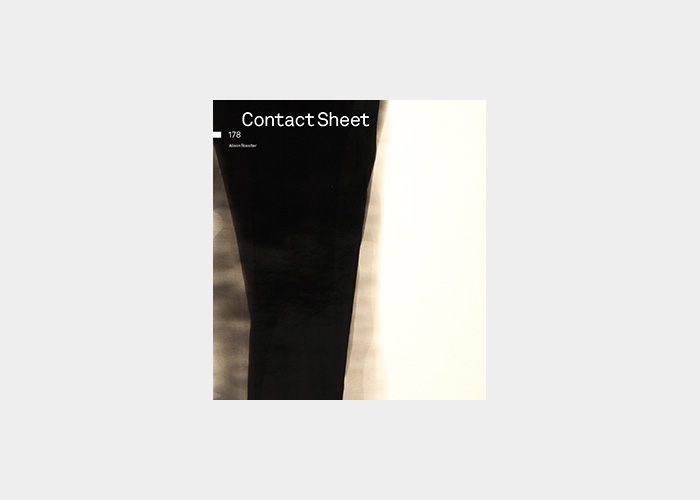Alison Rossiter: Revive
August 18 – October 17, 2014
Kathleen O. Ellis Gallery
Gallery Talk: Thurs, Sep 25, 6pm
Reception: Thurs, Sep 25, 5-7pm
Collect Revive exhibition catalog, Contact Sheet 178
In 2007 Alison Rossiter purchased a battered box of silver gelatin print paper, stamped with an expiration date of May 1, 1946. Intending to make photograms she headed into the darkroom to make a test print. What emerged on the paper as she moved it through the developer, stop, and fix, she describes as a beautiful Vija Celmins-like graphite drawing. With passion she talks about “finding” the drawing in the tired coating of the paper, “The silver halides could not maintain their light sensitive capacity. I knew then that there was something to go and find in the midst of the deterioration and failure of the paper.” And go and find she did. The shelves of her studio are lined with thousands of packages of expired paper purchased on eBay. Exquisitely beautiful found objects in themselves, the packages display one hundred plus years of design history.
Cameraless photographic processes in art are not new. Avant-garde masters Moholy-Nagy and Man Ray were two of the first artists to make photograms in the early 20th century. Placing objects directly onto photographic paper, they created formal compositions of cast shadows, shapes, and silhouettes. This type of experimentation in the darkroom continues to resurface and to be reinvented by contemporary artists who create abstractions that rely on chance and who celebrate process. These images are often aesthetically and conceptually contrary to the exacting science of photography.
The exhibition Revive includes photographs from two separate processes that the artist has explored over the years. One process she calls latent or found imagery. In this work she continues to develop a variety of expired papers to see what has been left behind. Fingerprints, oxidation, light leaks, and mold she sees as gifts, as evidence of the action of time. She points out, “I don’t make these prints. Time does.”
The other process she refers to as pours, an open-ended exercise that involves dipping and pouring chemistry in the darkroom. Like the Abstract Expressionist painters she is often compared to, this process celebrates unpredictability and a dialogue with simple raw materials. Allowing the liquid chemistry to make marks and shapes hearkens back to large-scale paintings by artists like Morris Louis and Helen Frankenthaler, who were interested in eliminating brushstrokes and allowing pure pigment to flow across the picture plane. Rossiter’s selective development unfolds in a similar way.
Earlier exhibitions have been titled, Lament, Latent, and Expiry, all chosen by the artist for their allusion to the loss of materials, for the loss of silver salt photography. This is perhaps one reason for the dark, elegiac quality of the work. Each piece is carefully labeled with the brand name of the paper, expiration date, and date of processing, reminding us of the passage of time and obsolescence. A package of paper, made in the early 1900s, arrives in Rositter’s studio over one hundred years later to offer what is left of its light sensitive capacity to the artist. For this gap of time she states, “I don’t really have words to describe.”
—
Alison Rossiter’s photographs are in the collections of major public institutions including: the Art Institute of Chicago; the Philadelphia Museum of Art; the Minneapolis Institute of Arts; the Museum of Fine Arts, Houston; the Milwaukee Art Museum; the Museum of Contemporary Photography, Chicago; the Center for Creative Photography, Tucson; and the J. Paul Getty Museum, Los Angeles. An education at the Rochester Institute of Technology and the Banff Centre School of Fine Arts, teaching positions at the Nova Scotia College of Art and Design and Drexel University, freelance photography in the studios of Christie’s auction house in New York, and eight years as a photography conservation assistant at The Better Image provide the foundation for Rossiter’s careful experiments with expired papers. Rossiter is represented by Yossi Milo Gallery in New York and Stephen Bulger Gallery in Toronto.



